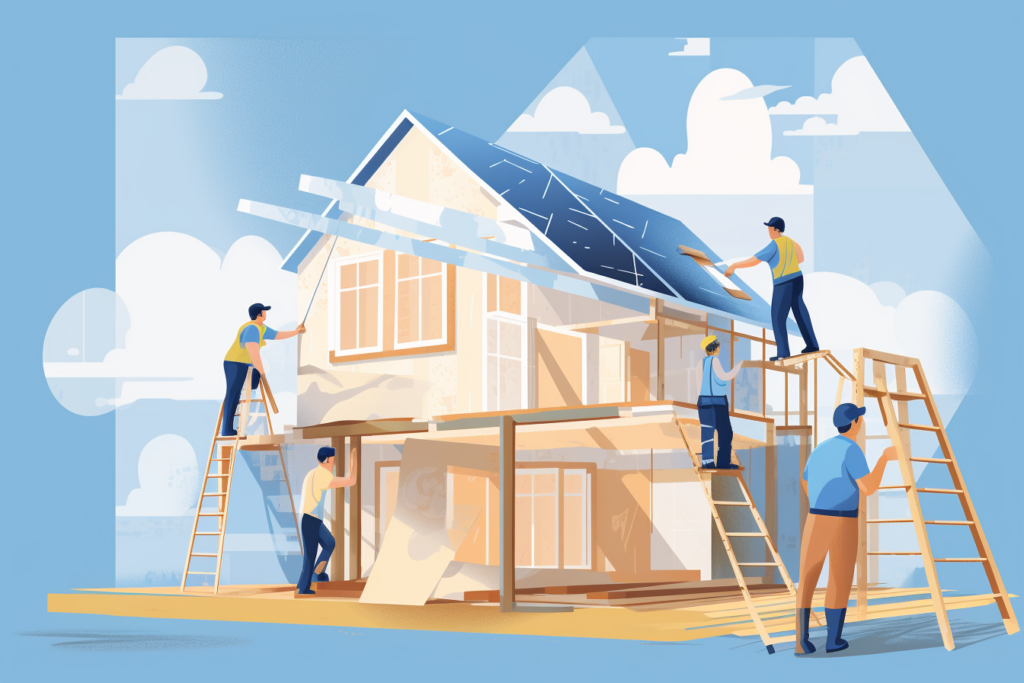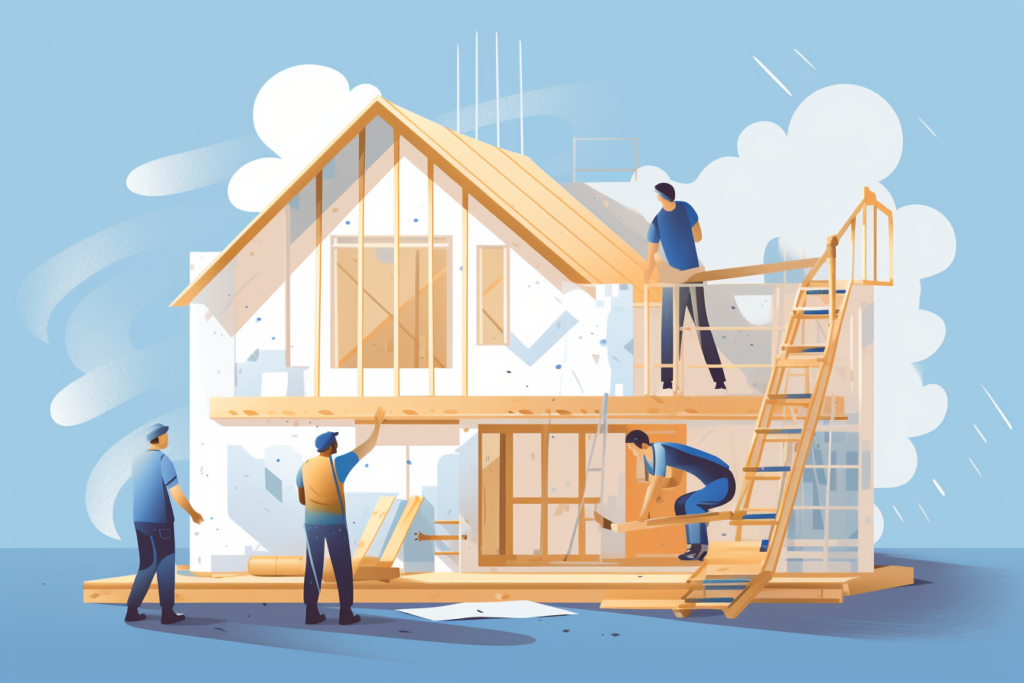Undertaking a home renovation can be exciting and daunting, especially when trying to stay within a budget. Knowing where to save money and where it’s worth spending a little more can make a significant difference in both the process and the final outcome. In this blog post, we’ll explore practical tips on balancing your budget with your home renovation goals.
Understanding Your Renovation Goals
Before diving into the specifics of budgeting, it’s important to understand your renovation goals clearly. Are you renovating to increase your home’s value, enhance functionality, or update its style? Your goals will significantly influence where you should save and where you can splurge.
Top Home Renovation Projects: Maximizing Impact and Value

Embarking on home renovation projects can transform your living space, enhance your lifestyle, and even increase your home’s value. Certain projects tend to yield better returns on investment and satisfaction than others. Here’s a closer look at some top home renovation projects offering immediate enjoyment and long-term benefits.
1. Kitchen Remodel
A kitchen remodel is one of the most popular home renovation projects because it is known to have a big return on investment when you sell your home.
- Heart of the Home: The kitchen is often considered the heart of the home, and a remodel can significantly enhance its functionality and aesthetic appeal.
- Return on Investment (ROI): A kitchen remodel, whether a minor update or a major overhaul, typically offers a high ROI, upwards of 70%+, by boosting your home’s resale value.
- Key Upgrades: Consider updating cabinets, countertops, appliances, and lighting. Even small changes like new hardware or a fresh coat of neutral/light-colored paint can greatly impact look and resale value.
2. Bathroom Renovation
A bathroom renovation can transform a purely functional space into a luxurious retreat.
- Smart Upgrades: Adding modern fixtures, efficient toilets, and stylish tiles can rejuvenate the space. For a touch of luxury, consider heated floors or a walk-in shower.
3. Adding or Refinishing a Deck
Expanding your living space outdoors with a deck can provide a substantial return, both in terms of property value and lifestyle enhancement.
- Materials Matter: The choice of materials, from classic wood to low-maintenance composite, can influence cost, durability, and overall look.
4. Basement Finishing
Often, homes will come with unfinished basements, making them a popular choice for updates to make them more functional.
- Extra Living Space: Finishing a basement can almost double your usable living space. This area can be transformed into a family room, home office, gym, or an additional bedroom.
- Increased Home Value: A finished basement adds to the square footage of your home, often significantly increasing its market value.
5. Attic Conversion
Converting an attic into a livable space is a fantastic way to add a unique room to your home, such as an extra bedroom, playroom, or home office.
- ROI Considerations: While the ROI might not be as high as other renovations, the value of added functional space in an otherwise unused area is a significant benefit.
6. Home Office Creation
With more people working from home, creating a dedicated home office space has become a highly desirable project.
- Efficient Design: Focus on good lighting, sound insulation, and ergonomic furniture to make the space comfortable and functional.
7. Energy-Efficient Upgrades
Replacing old windows with more energy-efficient ones, upgrading existing or adding new insulation, or installing solar panels reduces energy bills and appeals to environmentally conscious buyers.
- Government Incentives: Look into any available tax credits or rebates for energy-efficient home improvements.
8. Exterior Improvements
The exterior of your home is the first impression made on someone passing by. Sometimes, a little refresh can bring your home a new, fresh look and feel.
- Curb Appeal: Projects like repainting the exterior, updating the siding, or enhancing the front porch can significantly boost your home’s curb appeal.
- Landscaping: Well-planned landscaping can transform the exterior look of your home, making it more inviting and enjoyable.
9. Smart Home Technology Integration
Integrating smart home technology, like automated lighting, heating, and security systems, adds both convenience and appeal to tech-savvy buyers.
Where to Save
While home renovation projects can add up quickly, here are a few ways to save money in the process and still make a great improvement:
DIY Where Possible
Assess your skills and comfort level with DIY projects. Tasks like painting, simple tiling, or minor installations can often be done without professional help.
Learning Opportunities: Utilize online resources and tutorials for guidance.
Shop Around for Materials
Look for sales and discounts at hardware stores or online.
Reuse and Recycle: Consider repurposing materials or buying second-hand items.
Keep Structural Changes Minimal
Major structural changes like moving walls or plumbing can be costly. Work with your existing layout where possible. Try to envision how you can renovate the space with a new look and feel and not necessarily a whole new footprint.
Economical Material Choices
Choose less expensive but durable materials. For instance, opt for laminate countertops instead of granite or luxury vinyl flooring instead of hardwood. There are plenty of options that will last for years and still look expensive without breaking the bank.
Where to Splurge
There is a time and place for splurging on renovations, and here is where it might make more sense to spend a little bit more money:
Long-Term Investments:
- Energy-Efficient Appliances: Spend more on energy-efficient appliances to save money in the long run.
- Quality Fixtures: Investing in high-quality fixtures, like faucets and door handles, can ensure longevity and better performance.
Professional Assistance for Complex Tasks:
- Hire Experts: Hiring a professional is worth the expense for safety and quality for tasks beyond your skill level, such as electrical work or complex plumbing.
Focus on High-Impact Areas:
- Kitchen and Bathroom: These areas often yield the highest return on investment, so spending more on renovations here can add significant value to your home.
Quality Where It Counts:
- Cabinetry and Countertops: Spending more on quality cabinetry and durable countertops can be a wise investment in areas like the kitchen.
- Insulation and Windows: Good quality insulation and energy-efficient windows are worth the splurge for their long-term cost-saving and comfort-enhancing benefits.
Balancing Act: Mixing High and Low
- Combining Elements: Mix higher-end items with more budget-friendly options. For example, pair a luxury kitchen sink with a more affordable faucet.
Staying Within Budget
- Track Spending: Keep a close eye on your budget. Use spreadsheets or budgeting apps to track expenses.
- Contingency Fund: Set aside a contingency fund for inevitable unexpected expenses, typically 10-20% of your total budget.
Conclusion
Home renovation on a budget requires a strategic approach, balancing cost-saving measures with smart investments. You can create a beautiful, functional space without breaking the bank by focusing your spending on areas that will have the most impact and looking for savings where they matter least. Remember, careful planning, research, and a bit of creativity can go a long way in achieving your dream home renovation.
You might also be interested in: The 10 Best Home Improvement Projects For Winter




